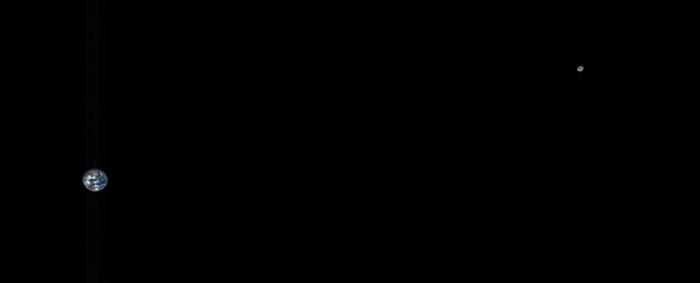Snapped on 2 October 2017, and recently released by the NASA Earth Observatory, the image shows Earth and the Moon, around 384,400 kilometres (238,855 miles) apart from each other, locked in orbit and separated by the vastness of space.
"At the highest philosophical level, OSIRIS-REx is a mission to figure out where we came from, as asteroids are remnants from the formation of our solar system," NASA Earth Observatory's post read.
"But while the spacecraft might tell us some things about where we have been and where we are headed, it also can remind us of where we are right now."
Or as Carl Sagan famously wrote about our pale blue dot: "That's here. That's home. That's us."
The Moon looks closer to Earth than it actually is, because the three bodies don't form an isosceles triangle - the moon is farther away, so the imaginary line between Earth and Moon is on an angle from OSIRIS-REx's perspective.
OSIRIS-REx took the photo with its MapCam instrument when the craft was about 5.12 million kilometres (3.18 million miles) from Earth and 5.42 million kilometres (3.37 million miles) from the Moon.
And for those who are wondering, there's a good reason there are no stars in the picture. Stars are actually very faint, which is why you can't see them during the day, and why you see fewer of them at night in well illuminated cities.
The photo is taken from the day side of Earth - which means it's too bright to see any of the stars behind it.
Three images were used to create this image from a colour composite, and Earth is so bright that the moon needed to be brightened in order to make it more visible.
Because the photo was taken months ago, OSIRIS-REx is long gone - speeding toward its August rendezvous with Bennu, which orbits the Sun in a path that crosses Earth's, but still some distance away from us.
Once it reaches the carbon-rich asteroid, it will commence its mission of taking data, and samples, and sending them both back to Earth - although the samples aren't due to arrive until 2023.
Now, if you need an antidote to seeing the Earth looking so isolated in space, go feast your eyes on Hubble's Deep Fields, where every speck of light is an entire galaxy.
More about: #Earth
















































